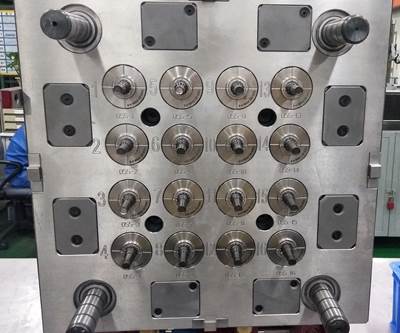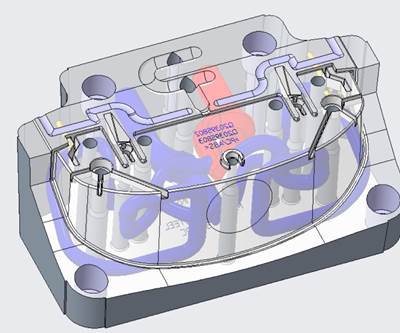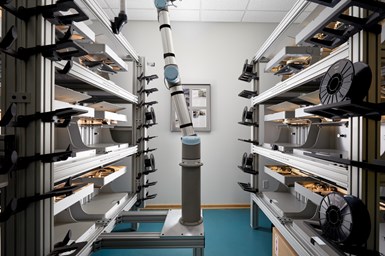
A toolroom has a variety of tried-and-true equipment, but not all machines are the right choice for a workpiece. Assessing a part’s attributes and production timeline can help determine the best machine for the job, resulting in an efficient and effective toolroom. Photo Credit: EVCO Plastics
Today’s modern toolroom includes multiple options to improve the workflow and manufacture of parts for customers. A toolroom can harness two go-to options: a CNC machine and a 3D printer. A CNC machine is the front runner for cutting intricate, specialized parts with tight tolerances. However, when parts don’t require adherence to such precision, offloading them to a 3D printer can enable a toolroom to work more efficiently and quickly. Sometimes the decision is evident when faced with whether a part should be printed or cut, but these five factors can help decide if there’s ever any doubt:
- Application: Consider the end goal of your part and the processes that will make for a more robust, higher-quality part. Those two variables can be a signal to move beyond a secondary machining operation and into an additive manufacturing technology space. One example is whether a part would benefit from conformal cooling, which can improve part flatness, sink and CPK values. Creating intricate channels and tooling inserts in the mold is best served by a different 3D printing process called direct metal laser sintering (DMLS). However, because of the complexity conformal cooling requires, traditional CNC applications aren’t able to create and position the cooling channels seen in 3D metal printing.
- Time: A hallmark attribute of a 3D printer is that it can print parts quickly. If the part needed is compatible with 3D printing operations and the printer is available, it can be programmed and run primarily unattended. While you can’t completely “set it and forget it,” for the most part you can, since 3D printers can run around the clock with minimal human interaction. Of course, the need to remove the completed parts, swap out plates and facilitate the next run keeps the process from being an actual lights-out operation. Still, users can allocate their time to more high-touch projects in the toolroom, even with the occasional printer project management.
- Nimbleness: If you’re still in the design phase, perfecting a part’s final specifications often requires multiple iterations. In that case, changing design direction quickly is made much easier with a 3D-printed part. In addition, if you need to add or delete detail, it can be reprinted until it’s perfect, shaving days off the total design and production time.
- Cost: Cost per part is always top of mind. From a financial perspective, producing a part out of high-quality carbon fiber creates end-use parts that are functional and cost-effective. For example, a roll of 3D printer material comes out to pennies on the dollar per part because it isn’t machined out of steel or aluminum — traditionally expensive materials, but even more so now.
- Accuracy: When tight tolerances matter, you likely need the accuracy of a machined part. Depending on what you’re working on and the resolution needed, a CNC machine will give the extra precision needed. Typically, a CNC machine will be accurate down to ± 0.0005 inch, while a 3D-printed part’s accuracy lies around ± 0.005 inch. That measurement doesn’t seem like a lot, but it can make a huge difference in certain end-use situations.
Related Content
Tips for Tackling Mold Design, Machining, Cutting Tool and Wear Challenges
Tips for tasks ranging from reducing risk in part design and taking advantage of five-axis machining to refining cutting tool performance and reducing wear with guiding and centering systems.
Read MoreOEE Monitoring System Addresses Root Cause of Machine Downtime
Unique sensor and patent-pending algorithm of the Amper machine analytics system measures current draw to quickly and inexpensively inform manufacturers which machines are down and why.
Read MoreMoldmakers Deserve a Total Production Solution
Stability, spindle speed and software are essential consideration for your moldmaking machine tool.
Read More3D Printing Enables Better Coolant Delivery in Milling Operations
Just like 3D printing enabled conformal cooling channels in molds, additive manufacturing is now being used to optimize coolant delivery in cutting tools.
Read MoreRead Next
How to Ensure Quality Offshore Tooling
When working with a foreign mold builder provide clear expectations and conduct comprehensive reviews throughout the moldmaking process to ensure a robust mold.
Read MoreConformal Cooling: Not Just Faster Parts but Better Parts
EVCO Plastics has been offering DMLS conformal-cooled inserts for years and like many shops today, they outsource this work to mold builders who have expertise in DMLS.
Read MoreAre You a Moldmaker Considering 3D Printing? Consider the 3D Printing Workshop at NPE2024
Presentations will cover 3D printing for mold tooling, material innovation, product development, bridge production and full-scale, high-volume additive manufacturing.
Read More

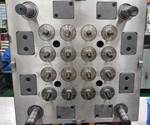
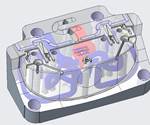







.jpg;maxWidth=300;quality=90)





